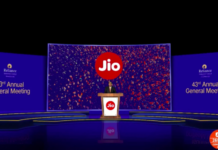Scientists have developed a next generation system which can transmit digital data over 10 times faster than 5G mobile networks, an advance that will pave the way for faster downloads and improve in-flight network connection speeds.
 Researchers from Hiroshima University and National Institute of Information and Communications Technology in Japan have announced the development of a terahertz (THz) transmitter capable of transmitting digital data at a rate exceeding 100 gigabits per second over a single channel using the 300-gigahertz band.
Researchers from Hiroshima University and National Institute of Information and Communications Technology in Japan have announced the development of a terahertz (THz) transmitter capable of transmitting digital data at a rate exceeding 100 gigabits per second over a single channel using the 300-gigahertz band.
The THz band is a new and vast frequency resource expected to be used for future ultrahigh-speed wireless communications.
The research group has developed a transmitter that achieves a communication speed of 105 gigabits per second using the frequency range from 290 GHz to 315 GHz.
This range of frequencies are currently unallocated but fall within the frequency range from 275 GHz to 450 GHz.
Last year, the group demonstrated that the speed of a wireless link in the 300-GHz band could be greatly enhanced by using quadrature amplitude modulation (QAM).
This year, they showed six times higher per-channel data rate, exceeding 100 gigabits per second for the first time as an integrated-circuit-based transmitter.
At this data rate, the whole content on a DVD (digital versatile disk) can be transferred in a fraction of a second.
“This year, we developed a transmitter with 10 times higher transmission power than the previous version’s. This made the per-channel data rate above 100 Gbit per second at 300 GHz possible,” said Minoru Fujishima from Hiroshima University.
“We usually talk about wireless data rates in megabits per second or gigabits per second. But we are now approaching terabits per second using a plain simple single communication channel,” said Fujishima.
“Fibre optics realised ultrahigh-speed wired links, and wireless links have been left far behind,” he said.
“Terahertz could offer ultrahigh-speed links to satellites as well, which can only be wireless. That could, in turn, significantly boost in-flight network connection speeds, for example,” Fujishima added.
“Other possible applications include fast download from contents servers to mobile devices and ultrafast wireless links between base stations,” he added.
“Another, completely new possibility offered by terahertz wireless is high-data-rate minimum-latency communications,” said Fujishima.
“Optical fibres are made of glass and the speed of light slows down in fibres. That makes fibre optics inadequate for applications requiring real-time responses,” he said.
Article Courtesy: Startagist
Image Credit: Pixabay












































